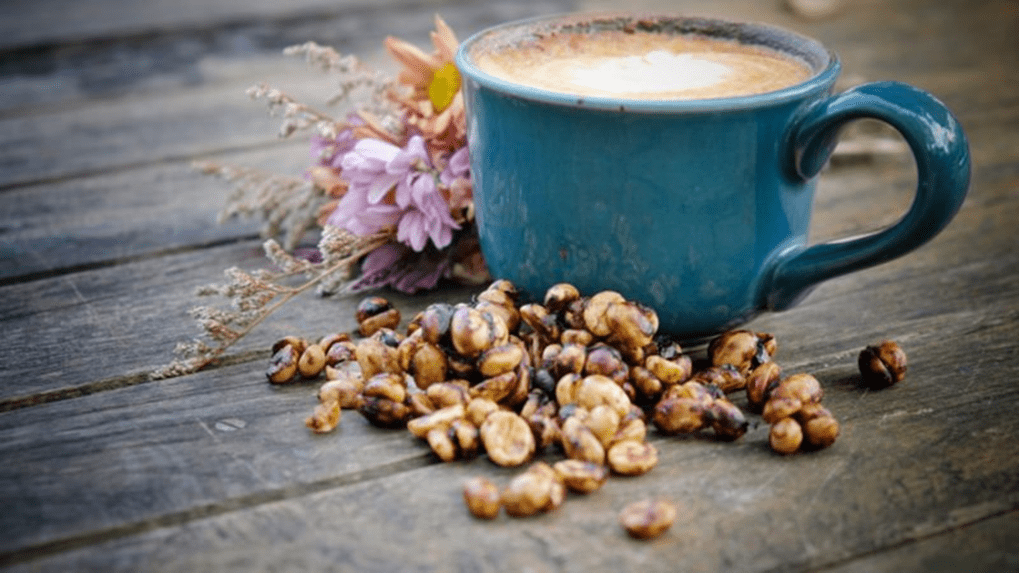
Honey in Coffee? - New Lao Specialty Coffee
What is Honey in Coffee?
One of the steps in Coffee Production is coffee processing. The 3 main Coffee Processing methods are Natural, Honey, and Washed.
The figure above shows the anatomy of a coffee cherry, note the Mucilage, which is the 3rd layer. Observe how many layers consist of the coffee cherry! Each of them is important in processing.
In both Washed & Honey processing, the first step involves Removing skin & pulp. The second step for Honey processing is drying, which is also done for Natural processing.
The first variant, Yellow Honey is derived by leaving the coffee beans to dry uncovered, for a week. This produces light bodied, floral and fruity coffee. We use Yellow Honey in our
coffee!
Natural processing produces dark coffee beans, and then you have the different variants of honey processing. Finally, washed processing produces green coffee beans.
Honey processed coffee contains the following characteristics:
Our journey of constantly learning about coffee, monitoring quality, and building on-the-ground relationships with coffee farmers pay off every now and then whenever we are able to plan new products for customers.
Our latest unique product in the Lao Coffee market highlights the expertise of Lao Coffee producers. However, it is still not renowned in the market, so we want to share how this coffee comes about.
What is Honey Processed Coffee? Is honey involved? Read on to find out more!
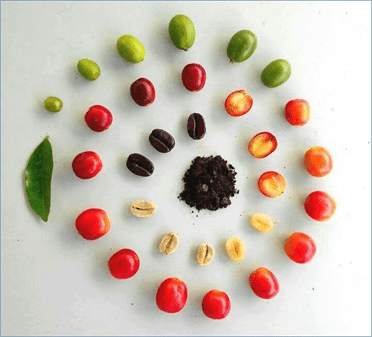
Credit: Photo by Kau Coffee Mill
In this article, we will review one of the processing methods known as Honey-Processing method.
But first, you need to know the anatomy of coffee cherries. Have you ever looked at the anatomy of coffee cherry or even held one in your hands before?
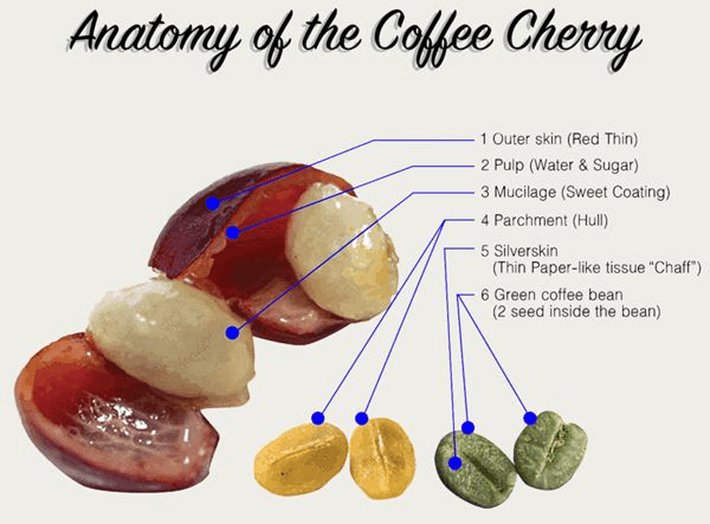
Note the Mucilage (Layer 3)
Credit: Photo by Calibri
Why the name ‘Honey-Processing’?
‘Honey’ refers to the Mucilage (Sweet Coating), which covers the beans in the Coffee Cherry.
In ‘Honey’ Processing, the skin and pulp of the cherry are removed, leaving the mucilage, or ‘Honey’, to dry along with the beans within.
Hence the name, ‘Honey’ Processing
Alright you know the anatomy and how the name of Honey Processing comes about…but
How does it differ from the other processing methods?
Honey processing involves steps from both Washed and Natural processing, resulting in a unique taste. Refer to the flowchart below for a brief overview for each process!
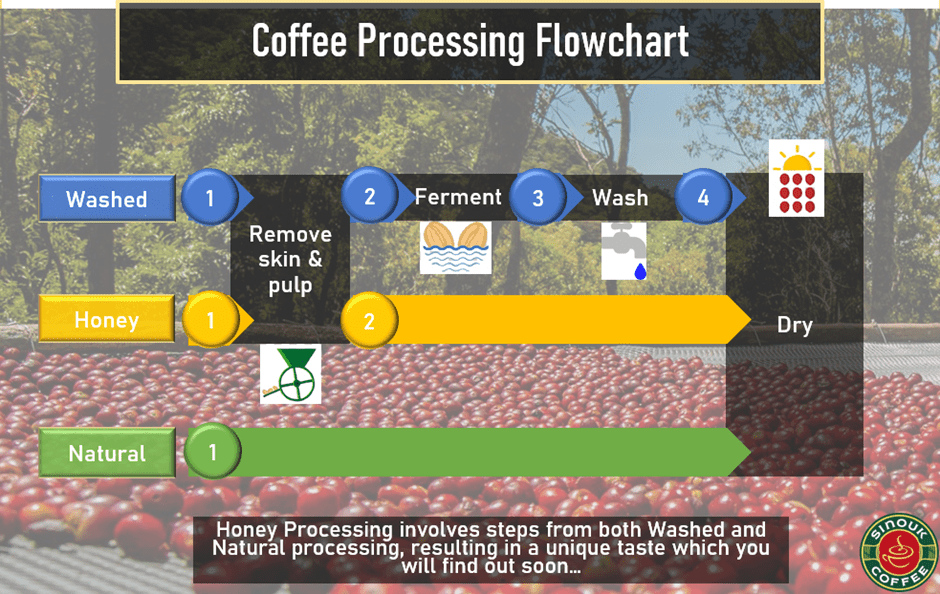
But that’s not all, there are actually a few variants for Honey Processing. What do the variants mean? Read on for more details!
Variants of Honey processing
There are 3 variants of Honey processing that produce 3 variants of coffee beans: Yellow, Red, and Black.
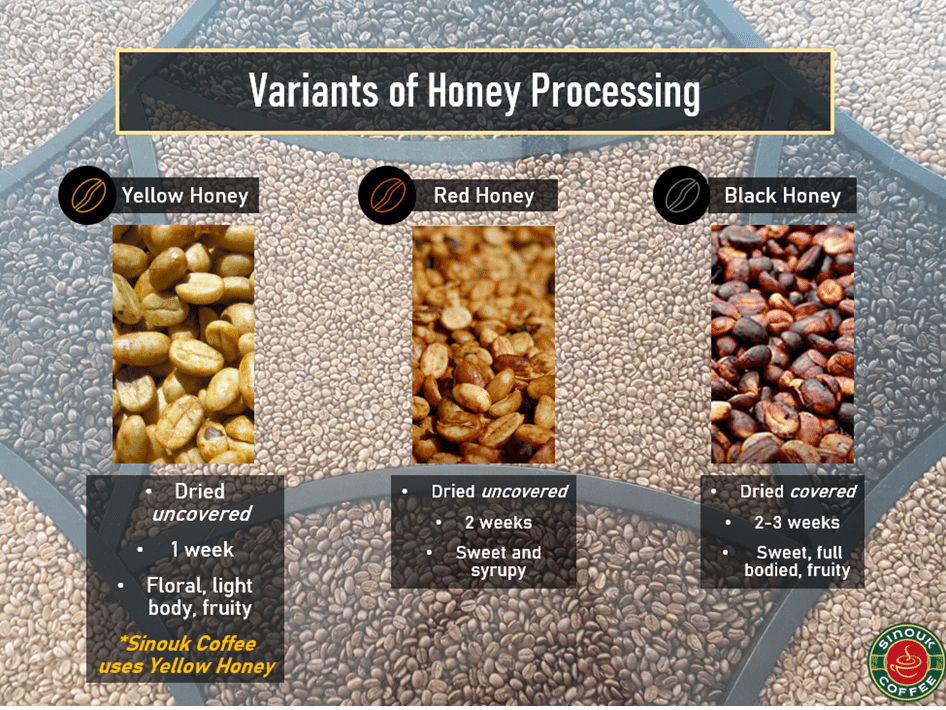
Red Honey is obtained through the same process but longer, by a week. This results in sweet and syrupy tones in the coffee.
Black Honey is acquired by leaving the beans to dry covered, for a 2 to 3 weeks. The beans produce full-bodied, sweet and fruity coffee.
How do these variety of beans fit into the larger picture of processed coffee beans? See the picture below for easy identification.
Colours of Coffee Beans

Alright, we know how the processing works and of the variants, but what does this all mean for the customer? What are the characteristics of the coffee that has gone through Honey Processing?
Why Honey Processing?
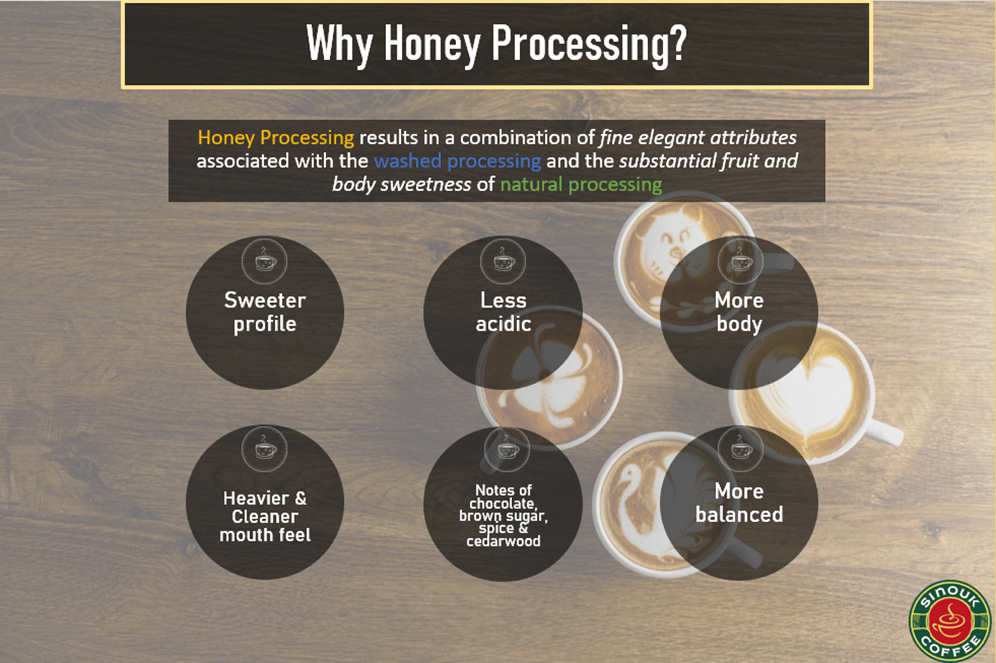
• Sweeter profile
• Less acidic – less dry and sparkly
• More Body – feels heavier on the tongue
• Cleaner mouth feel
• Notes of chocolate, brown sugar, spice & cedarwood
• More balanced – favours and aroma are not overwhelming; spread evenly on the tongue
Also, some fun details below…
Details about the Honey Processing:
• More environmentally friendly than other processing methods as it uses less water
• Hardest & demanding method out of the processing methods
Phew! That was a lot of facts but even if you don’t remember anything, hopefully you remember that Honey Processed Coffee does not actually involve Honey in the processing. Now you know one more fact about the world of Coffee, which you can share with others (you can use the social media buttons below!)
After all this information about Honey Processed coffee, do you feel a sudden craving? Are you enthusiastic to try it? Head on to your nearest Café Sinouk to try one!
Anyway, there are more facts coming up just for coffee lovers like you! Subscribe to our newsletter at the bottom of this page for updates!
Credits
• Featured image: SOPACHA NIROTHON/SHUTTERSTOCK
https://www.tasteofhome.com/article/honey-process-coffee/
• https://youtu.be/MchmDUATTmU
• https://www.youtube.com/watch?v=YLE7xhVtUJQ&ab_channel=WolffCollegeofCoffee&t=202s
• http://www.craftcoffeeguru.com/honey-processed-coffee/
• https://www.tasteofhome.com/article/honey-process-coffee/
• https://www.linkedin.com/pulse/whats-honey-guide-coffee-beans-processing-ofra-ronen/
• http://www.fincadeborah.com/the-three-methods-of-processing-geisha-coffee/
• https://kaucoffeemill.com/2018/11/19/the-anatomy-of-a-coffee-bean/
• https://savayacoffee.com/2018/01/18/the-coffee-processes-2/
• https://www.calibri.com.co/what-is-inside-a-coffee-cherry-and-how-does-it-affect-your-cup-of-coffee/

